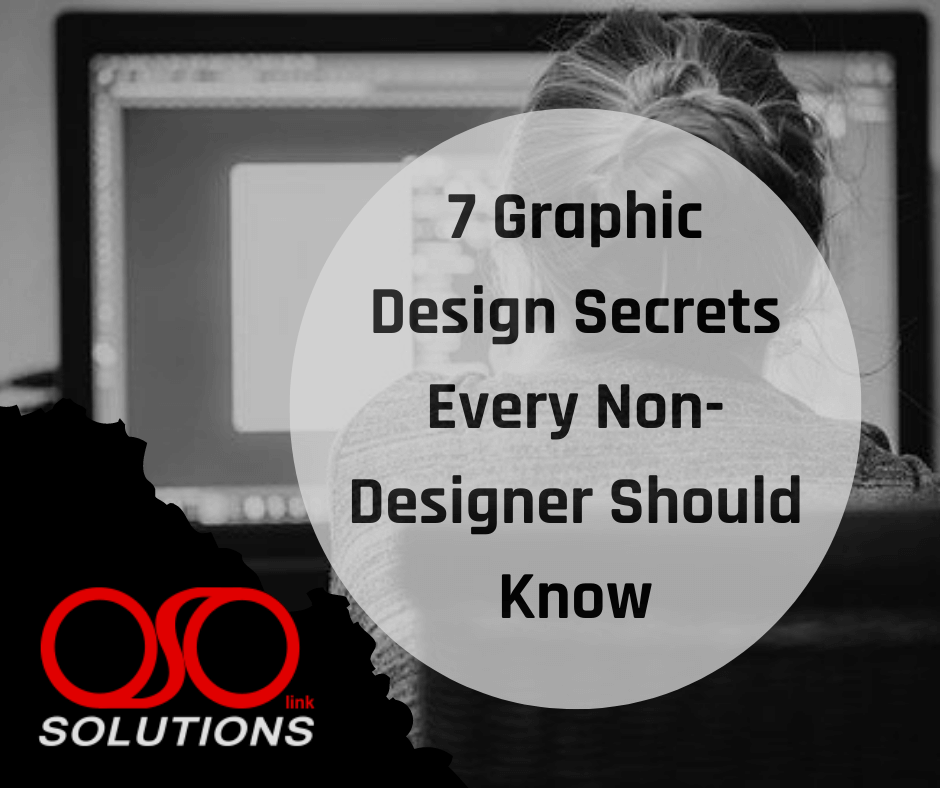7 Graphic Design Whether you’re designing a website, a flyer, or an invitation to a birthday party, there will likely come a time when you’ll need to know some of the basics of graphic designing to make your design visually appealing. Regardless of the software you use, odds are that you’ll be faced with a seemingly infinite number of fonts, clip art, colors and design elements that could potentially be used on your canvas. It’s enough to make even the most creative non-designer overwhelmed!
Some people are naturally gifted in knowing what placement and elements look best on a design project. For the rest of us, however, having an “eye” for design can take years of practice to develop. That’s why we’ve put together a list of tips from graphic design experts on the basics of design and ways to ensure that your project comes together exactly the way you envisioned it in your mind before you began—or maybe even better.
1. Keep it in the (font) family
A common mistake non-designers make when designing an invitation, sign, advertisement, web page, etc., is to include several different fonts. In addition to making your text harder to read, using too many fonts makes your design look unprofessional, cluttered and generally unappealing to the eye.
As with any field, you’ll find varying advice, but graphic design experts tend to agree that you should limit your typeface to one font—two at most, and that could be pushing it. When you are selecting the typeface for your project, if you must use two different fonts, be sure to keep the fonts within the same font family so that they are similar in appearance. This goes for titles, headings, subheadings and paragraphs. Instead of using a different font for emphasis, increase the size of the lettering to make a certain word or phrase stand out from the rest. This simple change in scale is all the emphasis (or de-emphasis) you’ll need.
2. Understand that your fonts speak volumes
While we are discussing fonts, let’s talk about which fonts to use. It’s important to understand that the fonts you choose affect the overall message of the design. For example, rounded fonts evoke a friendly, happy feeling while fonts with multiple sharp edges have a stronger, more aggressive feel. In graphic design for marketing, if the service or product being sold is luxurious, the designer might consider using cursive fonts. Basically, choosing the right font involves choosing a font that reflects the message and feel of your overall design.
The design experts at Canva, a web-based design program, provide the following analogy to demonstrate the importance of font choice:
Designers (including Erik Spiekermann, Dan Mayer, and Jessica Hische) have been known to compare choosing fonts for design projects to choosing an outfit to wear. And it’s an apt analogy. Think about what your clothes might say about you: based on what you wear, people might rightly or wrongly make assumptions about your style, your personality, your socio-economic background, your age (or the age you wish you were), or the kind of impression you want to make. And different occasions and situations call for different apparel. You wouldn’t wear a bathing suit to a job interview; then again, you wouldn’t want to wear a suit and tie during your vacation on the beach either. There’s an element of appropriateness to consider.
3. Use scale and color for impact
Remember when we discussed fonts and how to increase or decrease the scale of them for emphasis? The same holds true for any of the elements within your design. The best way to create impact in your message is to pay special attention to the scale and color of your text and its surrounding icons or photos. Poppie Pack, senior graphic designer for Canva, explains it like this:
The size you apply to your type will also create typographic hierarchy, determining the order that your text is read. The colors you use for your text will also create hierarchy. Make sure you apply the strongest colors to the content you want read first. Try reducing the less significant text and increasing its letter spacing. This will fill space as well as creating flush lines.
Poppie Pack
4. Give each element its space
Overcrowding images and text is another common mistake many non-designers make. And with all of the choices given in design programs, it’s an easy thing to do if you’re not paying attention. Giving each element a little space to breathe (so to speak) will do wonders in making your design look more professional and easier to read.
This is especially true with text. Don’t crowd text too closely to make it fit. If you’re limited on space and there is no way you can cut words in the text, make the font smaller instead of large and spaced too closely. The human eye can’t read crowded text easily and needs to see space around elements (text or images) in order to distinguish the separation of the elements.
You can look at a magazine or newspaper to see this in practice—the negative space in the margins and the spacing of the text are fundamental in ensuring that the page is easy to read and pleasing to the eye. We’ll discuss more about whitespace (otherwise known as negative space) in tip #7.
5. Simplicity is best
Leonardo Da Vinci, the famed painter, sculptor and inventor, once wrote that Simplicity is the ultimate sophistication. Ask any professional graphic designer and they are likely to tell you that the simple designs are usually the hardest to create. In fact, at the heart of great graphic design is simplicity.
This goes for your images as well as the text you’ve placed within the design. If there is an element or word that doesn’t have to be there, take it out. If your message is short and simple, it is more likely to be read and draw attention.
6. Use contrasting colors
Contrasting colors stand out and capture attention, so light text against a dark background, or alternately dark text against a light background is a good rule to follow. This can be difficult if you are using a photo as your background and the photo has different colors or shades on it, but you can still find contrast by limiting the text to one area on the photograph. Another way to handle this is to create a translucent overlay to achieve contrast. Most photo editing software like PhotoShop can create this effect easily.
7. White space is your friend
Again, consider Apple’s branding and their use of empty space to draw the eye’s attention to their famous logo. Keep in mind that the negative space doesn’t need to be literally white but empty space on your canvas is a good thing, so don’t feel the need to fill it all with icons or text. The more “stuff” you put on your design, the less powerful it will be. Sometimes, this requires moving different elements around on your canvas to find the best way to create the space. However, as you do this, you’ll notice how different elements will draw your attention more based on where the empty space is.
Also, reducing font or icon size to allow more space between lines of text allows for that text to stand out more and catch the eye. This same idea holds true if you have a lot of text and need to put it in columns. The more whitespace you can put between the columns, the better. This is often just a process of narrowing the columns.

Read more Blogs
Learn more about us. Feel free to contact us.
Source:
www.servicescape.com


